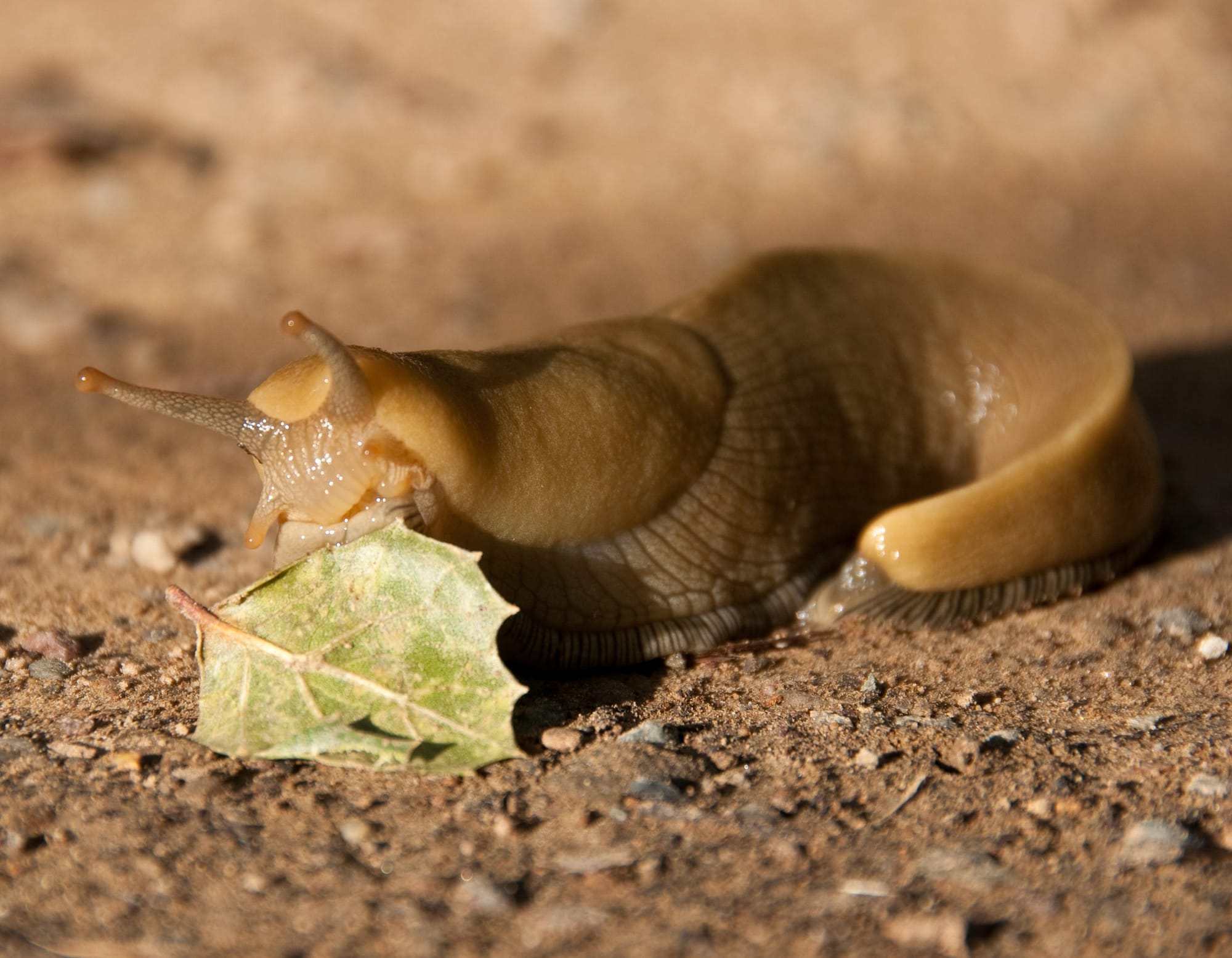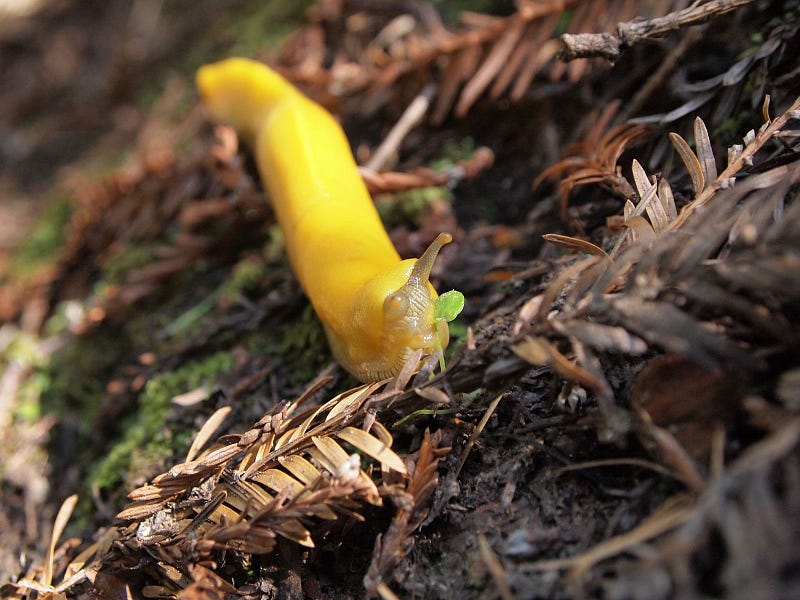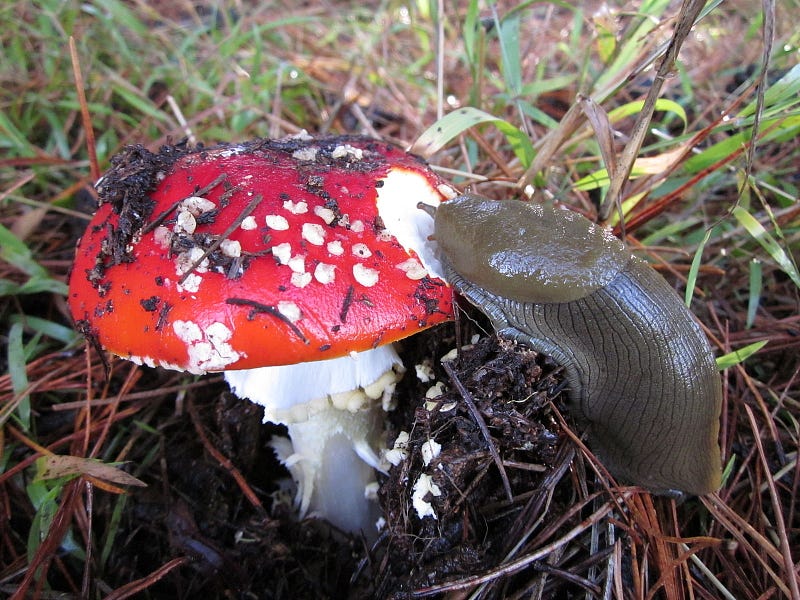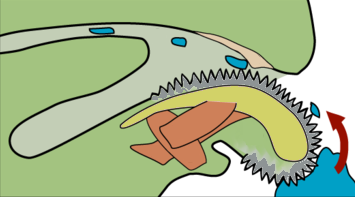
The banana slug is actually the common name for three separate species, the only members belonging to the genus Ariolimax. These are native to the Pacific coast of North America and one of them, Ariolimax columbianus, is the second-largest species of terrestrial slug in the world reaching 25cm in length and weighing up to 115 grams. They are often, though not always, bright yellow in color (hence the name) and are primarily found in forests.
Slugs are a type of mollusk, belonging to the group known as gastropods (‘stomach foot’ in Greek), commonly referred to as snails. ‘Slug’ is a general term for any animal of that group that either no longer have a shell, or have a small, sometimes internal, shell that they cannot fully retract into (the latter group are known as semi-slugs). Even if marine and terrestrial slugs were separated, it would not be possible to group all slug species together. It is clear from both morphological and DNA analysis that the loss of the shell occurred multiple times throughout a variety of gastropod lineages not closely related to one another.

The majority of slugs are generalists, eating a wide variety of items, usually dependent on their habitat and what they can find. While there are some predatory slugs, usually eating other slugs, snails, or earthworms, the banana slugs are not one of those. Instead, they are primarily detritivores, feeding on different types of dead matter and processing them into soil humus (sort of like nature’s recycling crew, an important job for any ecosystem to maintain a healthy food web). Because of this, their excretions are often high in nutrients such as nitrogen. However, they will also consume still living material including plants, as seen above, and fungi.
Mushrooms are apparently a favorite food source and the slugs are more resistant than humans to certain mushroom toxins. For example, the banana slug below is consuming an Amanita muscaria, known for being both hallucinogenic as well as moderately poisonous (no deaths have been reported from human ingestion of this species for more than a century). Mushroom poisoning usually kills via kidney and liver damage and the internal physiology of mollusks and other invertebrates can differ enough to avoid lethal toxicity.

In addition to its varied diet, the banana slug has an interesting physical mechanism for processing its food. This is a structure unique to mollusks called the radula (Latin for ‘little scraper’). It is not present in bivalves such as oysters or clams, but can be found in all other major mollusk groups (though absent in some individual species). The radula is a ribbon of chitinous rows of ‘teeth’ present in the molluscan mouth. It is primarily used for scraping or cutting food prior to it entering the esophagus. It has been compared in form and function to the vertebrate tongue. The diagram below shows the radula in grey with its cartilaginous support structure, called the odontophore, in yellow and the underlying muscles in orange.

The structure and function of the radula can vary as widely as the diets of individual species of mollusk. It can be used by herbivorous individuals for scraping algae off rock surfaces. Predatory species have adapted radula that function much like cutting teeth and cone snails have developed specialized radular teeth into poisoned harpoons for hunting and self-defense. For banana slugs, the radula still retains its likely ancestral function as a scraper of material from various surfaces, as well as a way to physically break down food into smaller particles prior to digestion.
Slugs are certainly not the most loved of animals. This may be in large part to the slimy trail they leave behind wherever they go. This mucus is important to prevent desiccation, the lack of a shell makes them more vulnerable to drying out, and also contains fibers to help keep the slug from slipping down vertical surfaces. Despite this distaste, it is important to recognize the role that detritivores like the banana slug play. They consume leftover materials and ensure that the nutrient cycles continue to flow. They may not be particularly cuddly, but try to keep in mind that you can often find natural beauty in the most unlikely places if you look hard enough.
I hope you are continuing to enjoy the stories on diet and foraging. We are now over halfway through Season 5. Please like and share. Let me know what parts you enjoy and what needs work as well as any suggestions you have for future season topics.